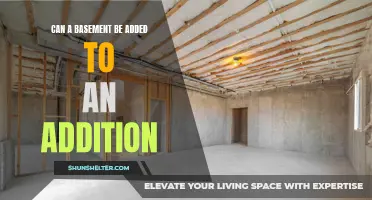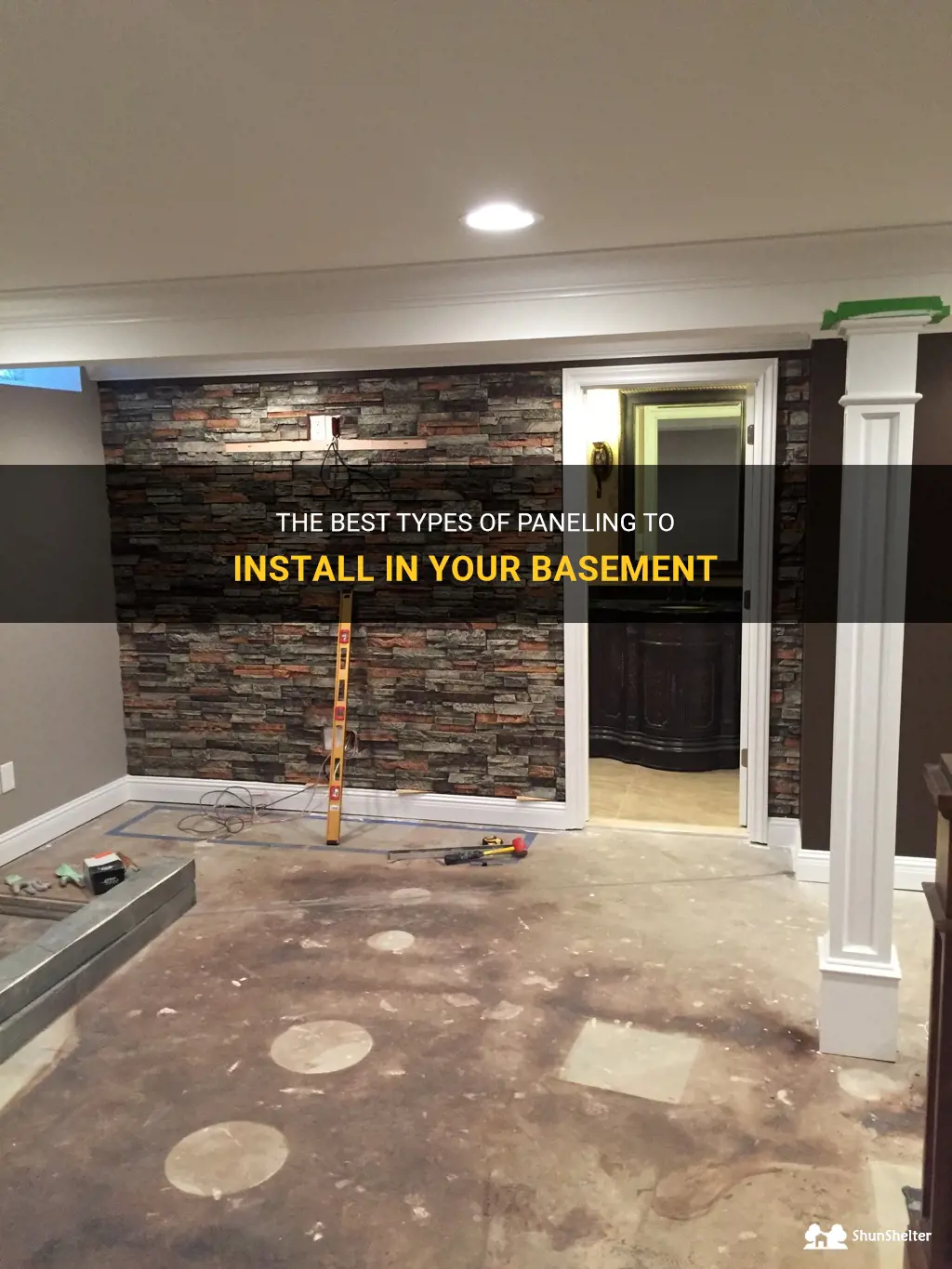
Are you looking to transform your basement into a functional and inviting space? One of the most important factors to consider is the type of paneling you install. Basement paneling not only adds visual appeal to the space but also provides practical benefits such as insulation and moisture resistance. From traditional wood paneling to modern alternatives like vinyl or stone, there are a plethora of options to suit your basement's style and needs. In this article, we will explore the different types of paneling that can be installed in a basement, discussing their advantages and potential applications. So, if you're ready to create a stunning basement that you'll love spending time in, keep reading to find the perfect paneling option for you.
What You'll Learn
- What types of paneling are suitable for basement installations?
- Are there specific considerations to keep in mind when choosing paneling for a basement?
- What are the pros and cons of different types of basement paneling materials?
- Can you recommend any affordable paneling options for basement installations?
- How difficult is it to install paneling in a basement Are there any special tools or skills required?

What types of paneling are suitable for basement installations?
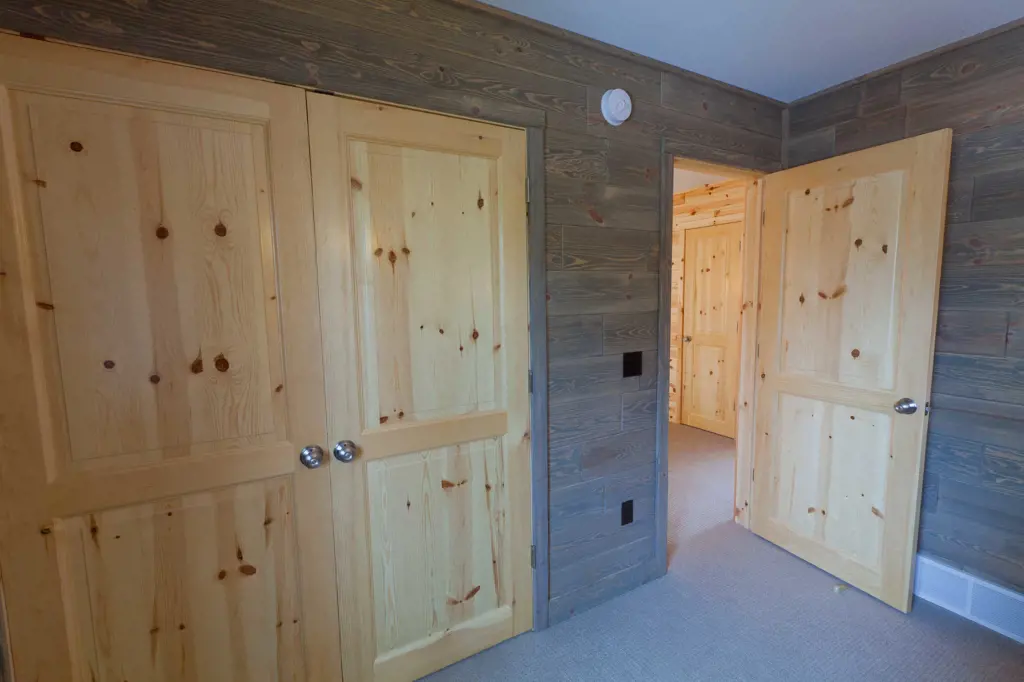
Basement installations offer homeowners the opportunity to create additional living space in their homes. One important aspect of basement remodeling is choosing the right type of paneling for the walls. The right choice of paneling will not only enhance the aesthetics of the basement but also provide other benefits such as insulation and moisture resistance. In this article, we will explore the different types of paneling that are suitable for basement installations.
- Drywall: Drywall is a popular choice for basement paneling due to its affordability and ease of installation. It is made from gypsum, a mineral compound that is sandwiched between layers of paper. Drywall can be painted or textured to achieve the desired look. However, one drawback of drywall is that it is not moisture resistant and can be damaged by water leaks or floods. To mitigate this, it is advisable to install a moisture barrier behind the drywall.
- Plywood: Plywood is another excellent choice for basement paneling. It is made by layering thin sheets of wood veneer together with adhesive. Plywood panels are strong and durable, making them a suitable option for basement walls. Additionally, plywood has natural insulating properties, which help in maintaining a comfortable temperature in the basement. It can be painted or stained to match the interior design of the basement.
- PVC Paneling: PVC (Polyvinyl chloride) paneling is a popular choice for basement installations, particularly in areas prone to moisture. It is a synthetic material that is resistant to water, making it ideal for basements that are susceptible to humidity or water leaks. PVC panels are lightweight, easy to install, and come in various designs and finishes, allowing homeowners to achieve their desired look for the basement. They are also low maintenance and can be wiped clean with a damp cloth.
- Fiber Cement Board: Fiber cement board is a composite material made from a mixture of cement, sand, and cellulose fibers. It is highly durable, resistant to water, and has excellent fire-resistant properties, making it an ideal choice for basement paneling. Fiber cement board is available in different sizes and can be installed with screws or nails. It can also be painted to match the desired color scheme.
- Insulated Wall Panels: For homeowners who prioritize insulation in their basement, insulated wall panels are an excellent choice. These panels are pre-insulated and can provide better thermal insulation compared to other types of paneling. They are typically made from a combination of foam insulation sandwiched between sheets of plywood or other materials. Insulated wall panels are easy to install and can significantly improve the energy efficiency of the basement.
In conclusion, when it comes to paneling for basement installations, there are several suitable options available. The choice will depend on factors such as budget, desired aesthetics, and specific requirements such as moisture resistance or insulation. Drywall, plywood, PVC paneling, fiber cement board, and insulated wall panels are all viable options that offer different advantages. Homeowners should carefully consider their needs and consult with professionals to determine the most suitable paneling option for their basement.
Creating Strong and Sturdy Basement Walls: Exploring Thickness Options
You may want to see also

Are there specific considerations to keep in mind when choosing paneling for a basement?
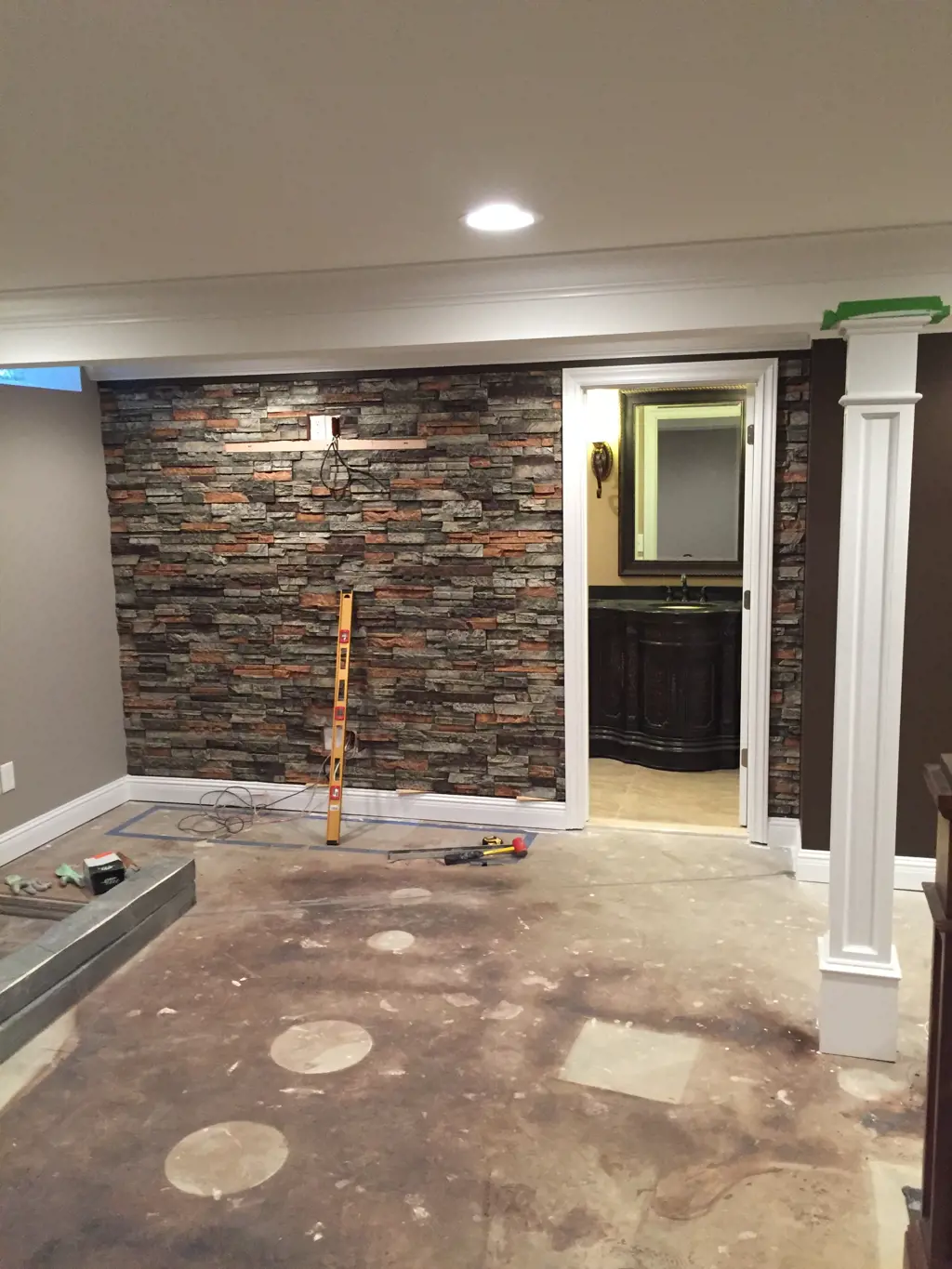
When it comes to choosing paneling for a basement, there are several important considerations to keep in mind. Basements are often prone to moisture and temperature fluctuations, so selecting the right type of paneling is crucial to ensuring a durable and long-lasting finish. In this article, we will discuss some of the main factors to consider when choosing basement paneling.
- Moisture Resistance: Basements are notorious for being damp and prone to moisture. Therefore, it is important to select paneling that is resistant to moisture and can withstand high humidity levels. One popular option for basement paneling is vinyl, as it is known for its moisture resistance and durability. Vinyl panels can be easily installed and offer a waterproof barrier against moisture, preventing any potential damage to the walls.
- Insulation: Basements tend to be colder than other areas of the house, so choosing paneling that provides insulation is essential. Insulated paneling can help regulate the temperature in the basement, making it more comfortable and energy-efficient. Foam-backed panels are a great option for insulating basement walls, as they can help to keep the space warmer and reduce energy costs.
- Acoustic Properties: If you plan to use your basement as a recreation space or home theater, consider choosing paneling that offers acoustic properties. Acoustic paneling can help to reduce noise transmission between rooms and minimize echoes, creating a more enjoyable and immersive audio experience. Look for panels with soundproofing or noise reduction properties for the best results.
- Easy Installation: Basement paneling should be easy to install, especially if you plan to do it yourself. Look for panels that come with installation instructions and require minimal tools for installation. Interlocking or tongue-and-groove panels can simplify the installation process and create a seamless finish.
- Durability and Maintenance: Basements can be prone to wear and tear, so it is important to choose paneling that is durable and easy to maintain. Consider paneling materials that are resistant to scratches, dents, and stains. PVC or laminate panels are popular choices for their durability and low maintenance requirements.
Overall, choosing paneling for a basement requires careful consideration of factors such as moisture resistance, insulation, acoustic properties, easy installation, and durability. By selecting the right paneling materials, you can ensure a basement finish that not only looks great but also withstands the challenges of the basement environment.
How to Flex Short Waterproof a Basement: A Step-by-Step Guide
You may want to see also

What are the pros and cons of different types of basement paneling materials?
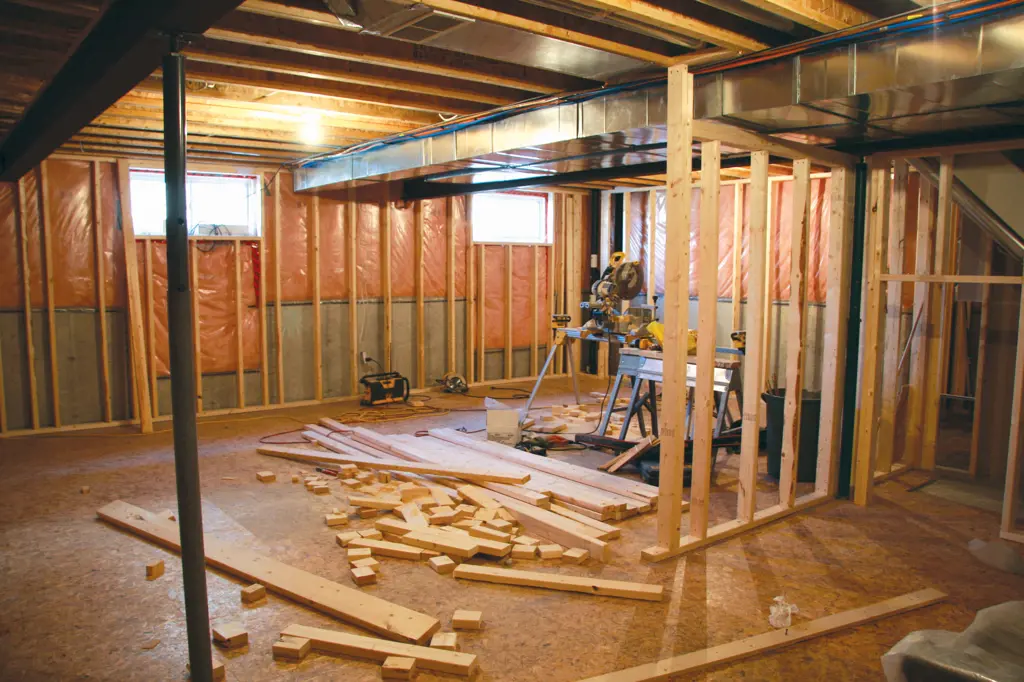
When it comes to finishing the basement, one important decision to make is the choice of paneling material. Basement paneling not only adds an aesthetic appeal but also serves functional purposes such as insulation and moisture control. There are several types of basement paneling materials available in the market, each with its own pros and cons. In this article, we will explore the different types of paneling materials and weigh the advantages and disadvantages of each.
Drywall:
Drywall is one of the most commonly used basement paneling materials. It is inexpensive and relatively easy to install, making it a popular choice for homeowners on a budget. Drywall provides a smooth and flat surface for painting, wallpapering, or applying other forms of finishing. However, drywall is not a good choice for areas with high humidity or moisture, as it can easily become damaged by water and may promote the growth of mold and mildew.
Wood Paneling:
Wood paneling adds a warm and natural look to the basement. It comes in various types of wood, such as cedar, pine, or oak, allowing homeowners to choose the option that suits their aesthetic preferences. Wood paneling also provides good insulation and soundproofing. However, wood paneling can be expensive, especially if high-quality wood is used. It may also require regular maintenance such as sanding, staining, or sealing to retain its appearance.
Vinyl Paneling:
Vinyl paneling is a popular choice for basement paneling due to its affordability, durability, and ease of installation. It is moisture resistant, making it suitable for basements that are prone to humidity or water infiltration. Vinyl paneling comes in a wide range of colors and patterns, allowing homeowners to achieve a desired look. However, vinyl paneling may not provide as much insulation as other materials, and it may not have the same aesthetic appeal as natural materials like wood.
Insulated Paneling:
Insulated paneling is an excellent choice for homeowners looking to improve the energy efficiency of their basement. These panels typically consist of a layer of foam insulation sandwiched between two layers of paneling material, such as plywood or drywall. Insulated paneling provides excellent insulation and soundproofing, helping to reduce energy costs and improve comfort. However, insulated paneling can be more expensive than other options and may require professional installation.
Fiberglass Paneling:
Fiberglass paneling is another option for basement paneling. It is lightweight, durable, and resistant to moisture and mold. Fiberglass panels often feature a textured surface that adds visual interest to the basement. However, fiberglass paneling may not provide the same level of insulation as other materials, and it can be more expensive than alternatives like drywall or vinyl.
In conclusion, there are several types of paneling materials available for finishing the basement, each with its own pros and cons. Drywall is inexpensive and easy to install but may not be suitable for moist environments. Wood paneling provides a natural and warm look but can be expensive and require maintenance. Vinyl paneling is affordable, durable, and easy to install but may lack the same aesthetic appeal as natural materials. Insulated paneling offers excellent insulation and soundproofing but can be more expensive. Fiberglass paneling is lightweight and resistant to moisture but may not provide the same level of insulation as other materials. By considering the specific needs and priorities for your basement, you can make an informed decision about which paneling material is best suited for your project.
Storing a Telescope in the Basement: What You Need to Know
You may want to see also

Can you recommend any affordable paneling options for basement installations?
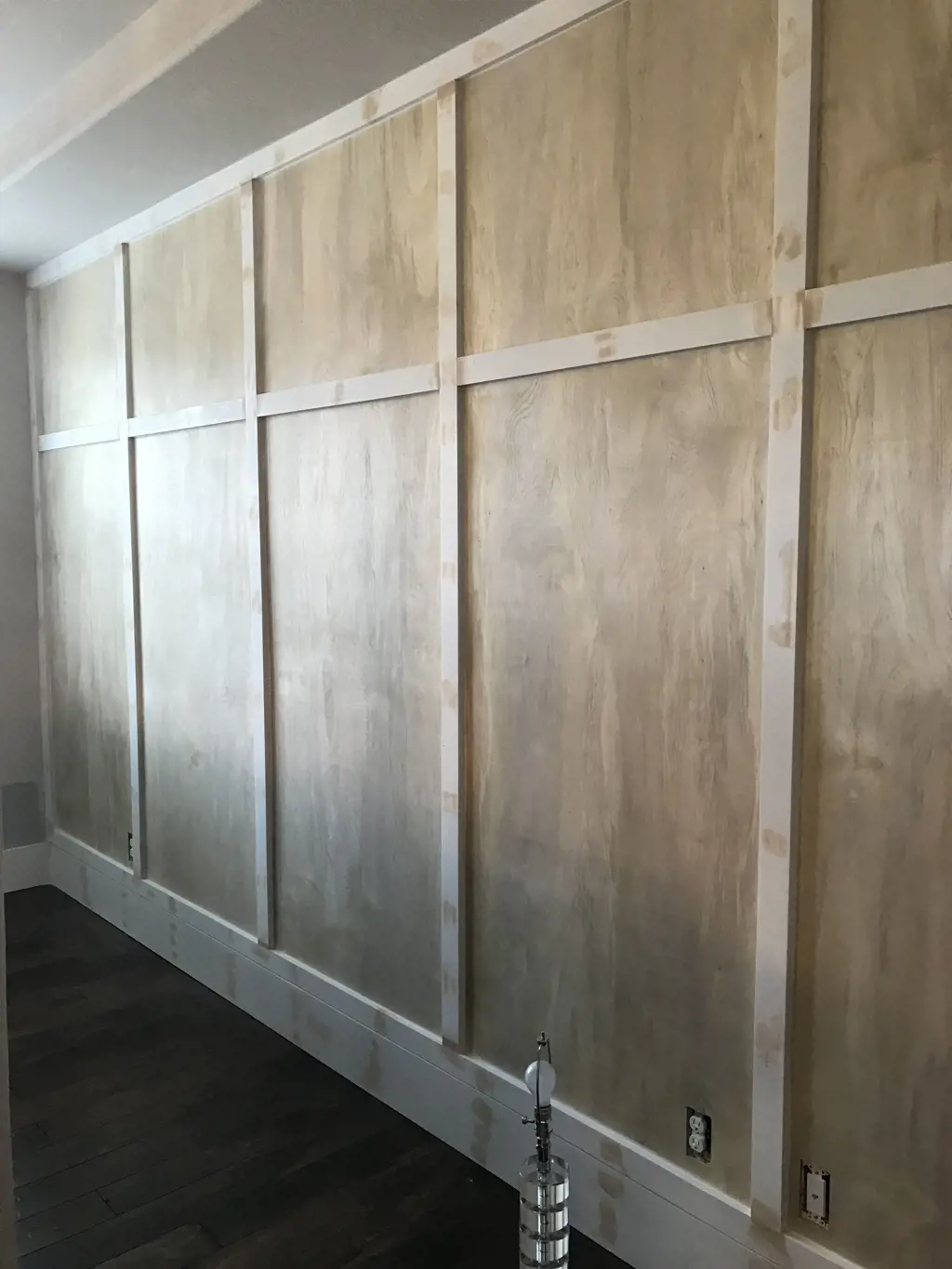
When it comes to finishing a basement, one of the most important considerations is the type of paneling to use for the walls. Paneling serves a dual purpose: it improves the aesthetic appeal of the space while also providing insulation and moisture resistance. However, finding affordable paneling options for basement installations can be a challenge. In this article, we will explore some cost-effective choices that will help you create a beautiful and functional basement.
Drywall:
Drywall is a popular choice for basement paneling due to its affordability and ease of installation. It is relatively inexpensive and readily available at most home improvement stores. Drywall also offers good insulation properties and can be painted to match any desired color scheme. However, it is important to note that drywall is not moisture resistant and may not be suitable for basements prone to water damage.
Plywood:
Plywood is another affordable option for basement paneling. It is made from layers of wood veneers and offers good strength and durability. Plywood can be stained or painted to achieve a desired look, and it can also be used in combination with other paneling materials for a more textured finish. However, like drywall, plywood is not moisture resistant and may not be suitable for damp basements.
Vinyl wall panels:
Vinyl wall panels are a cost-effective choice that offers moisture resistance and durability. They are easy to install and come in a variety of designs and finishes, ranging from traditional wood look to modern patterns. Vinyl wall panels are also easy to clean, making them a practical choice for basements. However, they may not offer the same level of insulation as other paneling options.
Wainscoting:
Wainscoting is a decorative paneling option that can add a touch of elegance to your basement. It typically consists of wooden panels that cover the lower portion of the walls, with a chair rail or molding separating it from the upper wall section. Wainscoting is available in various materials, including wood, PVC, and MDF. While wood and PVC options can be a bit expensive, MDF wainscoting is more affordable and still provides a similar aesthetic appeal.
Faux brick or stone panels:
If you want to create a rustic or industrial look in your basement, faux brick or stone panels can be a cost-effective alternative to real masonry. These panels are made from a variety of materials, including PVC, foam, or composite, and are designed to mimic the appearance of real bricks or stones. Faux panels are lightweight and easy to install, making them a popular choice for basement renovations. They can be painted or stained to match your desired aesthetic and are typically more affordable than real masonry.
In conclusion, there are several affordable paneling options available for basement installations. Drywall, plywood, vinyl wall panels, wainscoting, and faux brick or stone panels offer a range of choices to suit different aesthetics and budgets. Consider factors such as moisture resistance, insulation properties, and ease of installation when selecting the best paneling option for your basement. With careful planning and the right choice of paneling, you can create a beautiful and functional space that fits within your budget.
Exploring the Possibility of Radon Presence in Homes without Basements
You may want to see also

How difficult is it to install paneling in a basement? Are there any special tools or skills required?
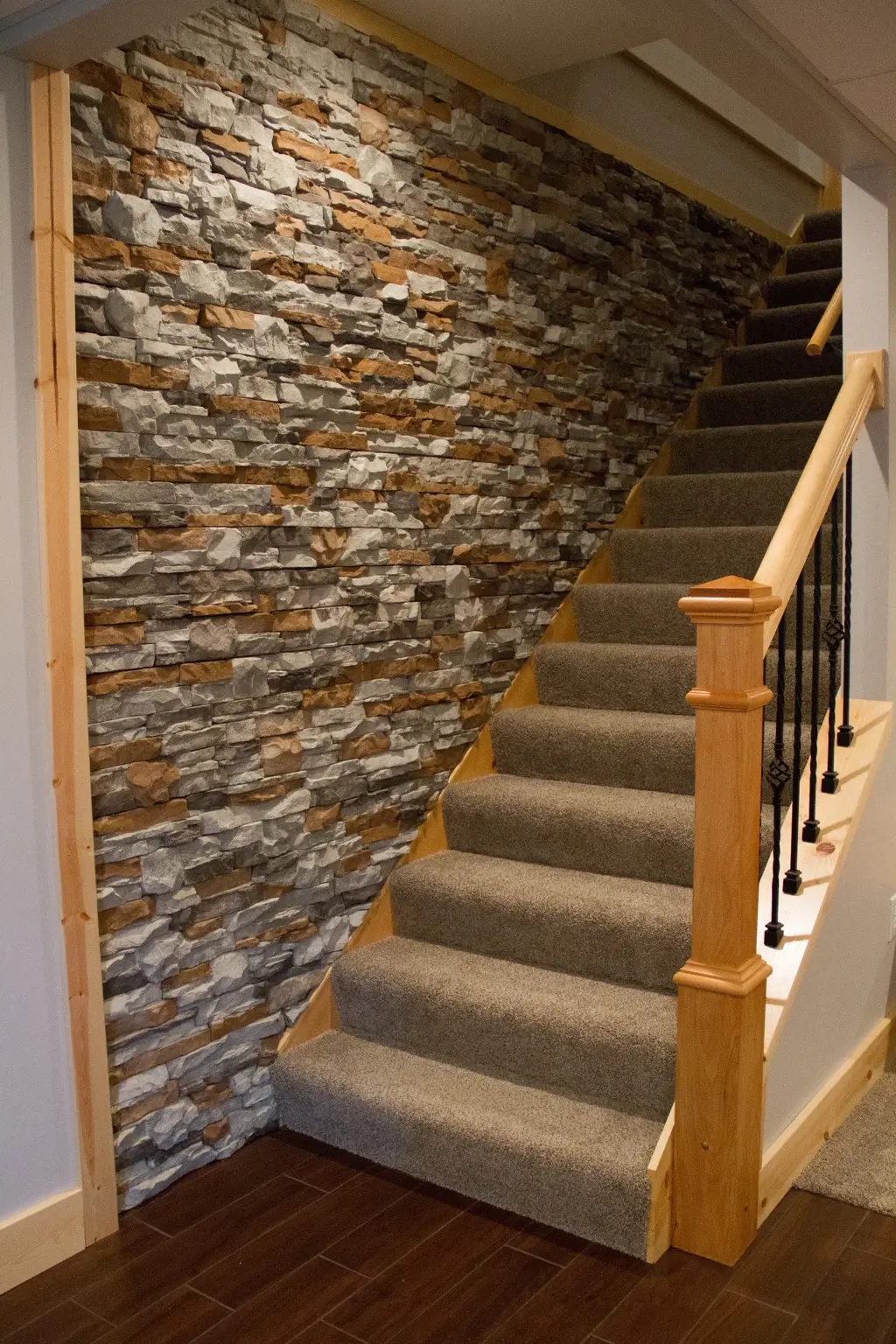
Paneling can be a great way to enhance the appearance of a basement, adding warmth and beauty to an otherwise plain and utilitarian space. Installing paneling in a basement is generally a straightforward process, but there are a few considerations to keep in mind to ensure a successful installation. While no special tools or skills are required, a basic understanding of carpentry principles and some patience will go a long way in achieving professional-looking results.
Firstly, it is essential to properly prepare the basement walls before installing the paneling. The walls should be clean, dry, and free from any existing paint or wallpaper. Any moisture issues should be resolved before proceeding with the installation, as dampness can cause the paneling to warp or mold to grow behind it. It is also a good idea to inspect the walls for any structural issues or damage that may need to be addressed.
Once the walls are ready, it is time to measure and cut the paneling to fit. This is where some basic carpentry skills come into play. Using a tape measure, carefully measure the dimensions of each wall, accounting for any openings such as windows or doors. It is important to note that paneling should be installed from the floor up, so it is necessary to trim the bottom panels to ensure a level and professional finish. A circular saw or a table saw can be used to make these cuts, but be sure to follow all safety precautions and wear appropriate protective gear.
After the paneling has been cut, it is time to attach it to the walls. One of the most common methods is to use paneling adhesive and nails or screws. Apply a generous amount of adhesive to the back of each panel, ensuring full coverage. Next, position the panel against the wall, starting from one corner and working your way across. Use a level to ensure the panel is straight and plumb, adjusting as necessary. Once the panel is in the desired position, secure it to the wall using nails or screws. Repeat this process for each panel, making sure to leave an expansion gap at the top and bottom to allow for any natural movement.
For a more advanced installation, tongue-and-groove paneling can be used. This type of paneling has interlocking edges that create a seamless and secure fit. The installation process is similar to the adhesive method, but instead of using nails or screws, the panels are connected by sliding the tongue of one panel into the groove of the next. This method requires more precision and attention to detail but results in a professional-looking finish.
In conclusion, installing paneling in a basement is a DIY-friendly project that can transform the space into a cozy and inviting area. While no special tools or skills are required, it is important to properly prepare the walls and take the time to measure and cut the paneling accurately. Whether using an adhesive or tongue-and-groove method, following these step-by-step instructions will help ensure a successful installation. With a little patience and care, you can create a beautiful and functional basement that you will enjoy for years to come.
How to Snake a Floor Drain in Your Basement Like a Pro
You may want to see also
Frequently asked questions
There are several options for paneling that can be installed in a basement. One popular choice is moisture-resistant paneling, such as vinyl or PVC panels. These types of paneling are designed to withstand the damp conditions often found in basements and can help prevent mold and mildew growth. Additionally, they are easy to clean and maintain.
While wood paneling can add a warm and rustic look to a basement, it may not be the best option due to moisture concerns. Basements can be prone to excess moisture and humidity, which can cause wood to warp, rot, or develop mold. If you still wish to use wood paneling, it is important to choose a treated or moisture-resistant option and take steps to properly seal and protect the wood.
Yes, there are eco-friendly options available for basement paneling. One popular choice is bamboo paneling. Bamboo is a highly renewable resource that is known for its strength and durability. It is also resistant to moisture, making it suitable for basement installations. Another eco-friendly option is reclaimed wood paneling, which is made from salvaged or repurposed wood. Reclaimed wood can add a unique and rustic look to your basement while reducing the demand for new materials.
Yes, drywall can be a suitable option for basement walls instead of paneling. Drywall is a popular choice as it is affordable, readily available, and provides a smooth and seamless finish. However, it is important to ensure that the basement is properly insulated and moisture-controlled before installing drywall. Moisture can cause drywall to become moldy or damaged, so it is essential to address any moisture issues in the basement before installation.


